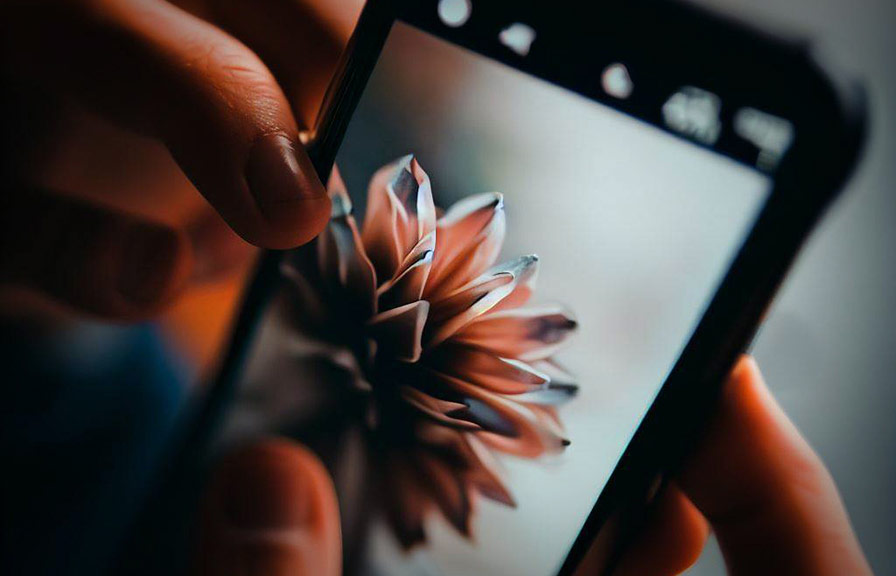Macro photography is a fascinating world where the tiniest details of our surroundings come to life. capturing these intricate details with the perfect balance of colors and symmetry can make your photos stand out. but how can you use these elements to isolate the subject and the details of a macro photo?
Let's dive in!

A colorful world in miniature
Did you know that some insects, such as butterflies and beetles, have microscopic scales on their wings and bodies that produce stunning colors? these scales are so small that they can only be fully appreciated through macro photography.
This incredible display of color at such a small scale can serve as an inspiration for your own macro photography.
The power of color in macro photography
Color is an essential aspect of any photograph, but in macro photography, it takes on an even more significant role. the right combination of colors can effectively isolate the subject from the background, making the details stand out.
Here are some tips on using color to your advantage inmacro photography:
1. Complementary colors: using colors that are opposite each other on the color wheel can create a striking contrast in your macro photos. for example, pairing a subject with a green background against a red subject will make the subject pop.
2. Monochromatic color scheme: choosing a single color for both the subject and the background can create a cohesive and visually appealing image. by using different shades and tones of the same color, you can achieve an interesting balance between harmony and contrast.
3. Color gradation: introducing a gradual shift in color within the frame can add depth to your macro photos. this technique can be applied to both the subject and the background, drawing the viewer's attention to the details of the image.
4. Selective color: isolating a single color within a black and white image can create a powerful visual statement. by highlighting a specific color in your macro photo, you can draw attention to the subject and its intricate details.
Symmetry: a balanced composition
Symmetry is another important aspect of macro photography that can be used to isolate the subject and the details. when a subject is symmetrically framed, it creates a sense of balance and harmony within the image. here are some tips on incorporating symmetry in your macro photography:
1. Reflections: using a reflective surface, such as water, glass, or a mirror, can create a symmetrical composition. by placing the subject near the reflective surface, you can achieve a visually pleasing balance in the image.
2. Radial symmetry: many subjects in nature, such as flowers, exhibit radial symmetry. by focusing on the center of the subject and its surrounding pattern, you can create a captivating macro photo.
3. Symmetrical patterns: look for patterns in nature, such as the arrangement of leaves on a plant or the veins within a leaf. these patterns can create a sense of symmetry that draws attention to the subject and its details.
4. Breaking symmetry: introducing an asymmetrical element to a symmetrical composition can create visual tension and interest. by breaking the symmetry in a subtle way, you can encourage the viewer to explore the image's details further.
Capturing the perfect macro shot
Now that you have a better understanding of how to use colors and symmetry to isolate the subject and the details of a macro photo, here are some additional tips to help you capture the perfect shot:
1. Focus stacking: due to the shallow depth of field in macro photography, focus stacking can be a useful technique for achieving sharp focus throughout the image. by taking multiple shots with different focus points and combining them later in post-processing, you can create a final image with impressive
Detail and clarity.
2. Lighting: experiment with different lighting techniques, such as natural light, diffused light, or artificial light sources like flash. the right lighting can make a significant difference in the overall appearance of your macro photos.
3. Depth of field: play with different aperture settings to achieve the desired depth of field. a shallow depth of field can help isolate the subject and its details, while a deeper depth of field can create a more immersive and detailed image.
4. Background: pay attention to the background of your macro photos. a clean, uncluttered background can make the subject and its details stand out, while a busy or distracting background can detract from the image.
By incorporating these techniques and tips into your macro photography, you can create stunning images that showcase the beauty of the miniature world around us. so, bring your camera, find a captivating subject, and start exploring the fascinating world of colors and symmetry in macro photography!
